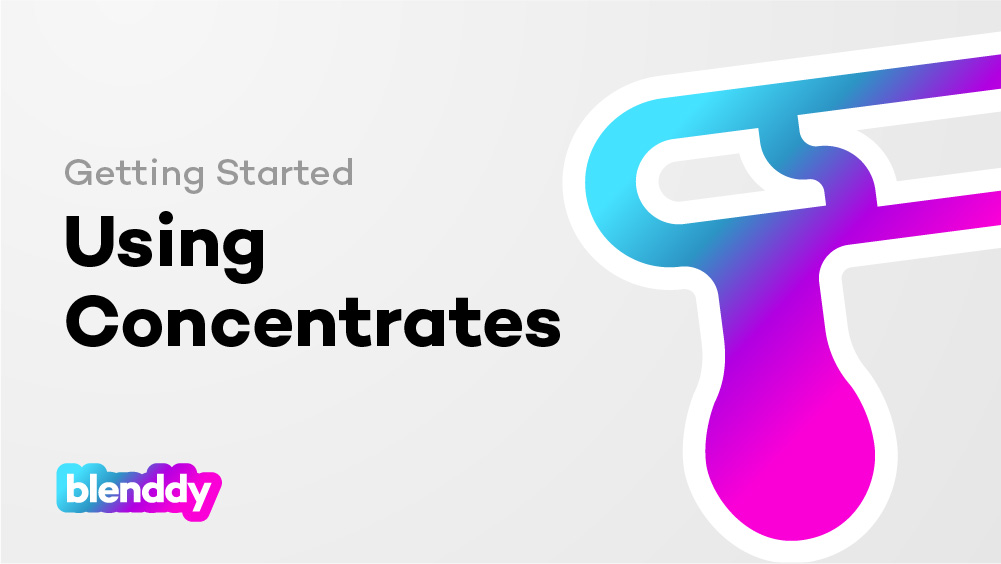Cannabis concentrates are becoming more and more popular amongst cannabis users. Because a little goes a long way, they’re a great choice for those wanting the biggest punch from the least amount of sessions. With so many different ways concentrates are made, it can be hard to know which one is right for you. In this blog post, we’ll introduce the different types of concentrates and a few thoughts on whether they’re right for you.
What are Concentrates?
As the cannabis industry grows, so does the push to get ever potent and cleaner forms of cannabinoid ingestion. Enter concentrates — potent, purified compounds from the cannabis plant. Each drop drips with THC and CBD, resulting in a product far more potent than dried flower bud.
Concentrates are not limited to the same physical form. They come in varying levels of viscosity — from liquid oils to solid mass and literally everything in-between. Depending on the manufacturing process, concentrates can contain some, or all, of the cannabinoids and terpenoids from their parent flower, or from a combination of multiple flowers.
Each concentrate comes specialized for its own use case. They can satisfying people looking for a quick, portable sesh or a longer, savory experience. The limits of concentrates exist only by your lifestyle and imagination.
The Differences Between Concentrates
With all of these unique properties, knowing a bit about their background can help you select the best for your cannabis experience. The types of concentrates are generally separated depending on how they’re made:
Dry Based
Products: Kief (Resin), Dry Ice Kief, Finger Hash, Rosin
All dry based products have their cannabinoids and terpenoids sifted from dried buds, trim, or lower-grade water hash/kief. The resulting material gets pressed to form a golden shatter or oil-ish extract similar to high quality water hash or solvent extracted shatter. These can be consumed alone or atop a bowl of flower.
Wet Based
Products: Hash, Bubble, Ice Wax – There are a variety of techniques used to produce water hash and as a result, products come in many different forms (bubble hash, solvent-less wax, ice wax, and others). Wet based concentrates mix either dry or fresh frozen cannabis with cold water and ice, which then gets shaken to detach the now-brittle trichome heads.
Solvent Based
Products: Butane Hash Oil, Ethanol Hash Oil, Honey Oil, Honeycomb, Wax, Crumble, Live Resin, Shatter, Budder, Errl
These forms of concentrates use a solvent (butane, ethanol, isobutane, acetone) to extract the cannabinoids and terpenoids. In contrast to CO2 extraction, these methods require only one additional post-process to purge the solvent, which results in terpene-rich cannabis extracts.
The form of the final product depends on the extraction process used, which can come as a liquid, a solid (shatter), semisolid (wax), or a brittle solid (honeycomb wax). Color is equally variable, ranging from clear amber to near black. These concentrates can be used by themselves in “dab” rigs, water pipes, vaporizers, or added within joints.
CO2 Based
Products: Oil – These concentrates are made using C02 solvent in its liquid aka “critical” state. While CO2 is safer and more environmentally responsible over solvents, this process introduces moisture, lipids and waxes from the plant material, which requires additional filtering processes to remove. Subsequently, there may be a loss in original terpenes and flavor. Depending on a manufacturer, they may add back separately extracted terpenes. Since CO2 extraction makes for a runnier oil, these often come in a syringe or vape cartridge.
What else is there?
Distillates – The above concentrates have additional processing to remove undesired compounds and plant material. Often this isolates one cannabinoid, either THC or CBD, in an odorless and flavorless product. Since distillates lack terpenoids, there is no entourage effect. However, distillates can increase potency in other products with its addition. Some manufacturers decide to add back terpenes but research is still out on how this compares to whole plant offerings.
How much to Use?
As a comparison, modern flower potency ranges from 5-30% THC, while concentrates start around 65% and run up to 90% THC. These multiples show the importance on being aware of product potency. Inexperienced users should start with only 1-2 puffs and re-assess before consuming more.
Even more than concentrates being multitudes stronger than flower, everyone reacting differently, so it’s important to start slow and experiment until you find the best amounts for your experiences. With Blenddy’s Session Log, accurately track your dosage and effects for each product.
Will All Concentrates Get Me High?
Up to now, we’ve been referring to cannabis concentrates made from plants with THC. But there’s an entirely separate class of concentrates made from CBDs. These won’t get you high in the traditional sense, but may make you feel relaxed, help with your sleep or decrease inflammation.
As with all cannabis products, we recommend starting low and going slow and working towards the effects. Blenddy helps track your efficacy as well as highlight what works for you.
Advantages of Concentrates
- High Potency – good for those where flower isn’t enough
- Quick Effect – Requires Less Sessions
- Ultra Portable
- Less Odor
- Supports as an addition to Flower
Disadvantages of Concentrates
- Confusing – read the fine print
- Easy to consume too much
- Measuring microdoses is more challenging
- Expensive up front cost
Conclusion
Thanks for reading our guide on concentrates! When it comes to concentrates, a quick powerful hit with portability separates it from the other processes. But what differs are the production methods that provide distinct taste differences. For something high flavor, look for whole plant offerings that include terpenoids and flavinoids, while for all out potency, perhaps a distillate or pre-package CO2 extraction. And don’t count out the custom combinations that manufacturers make to create mouth watering solutions. Have you tried using cannabis concentrates? What was your experience like?
